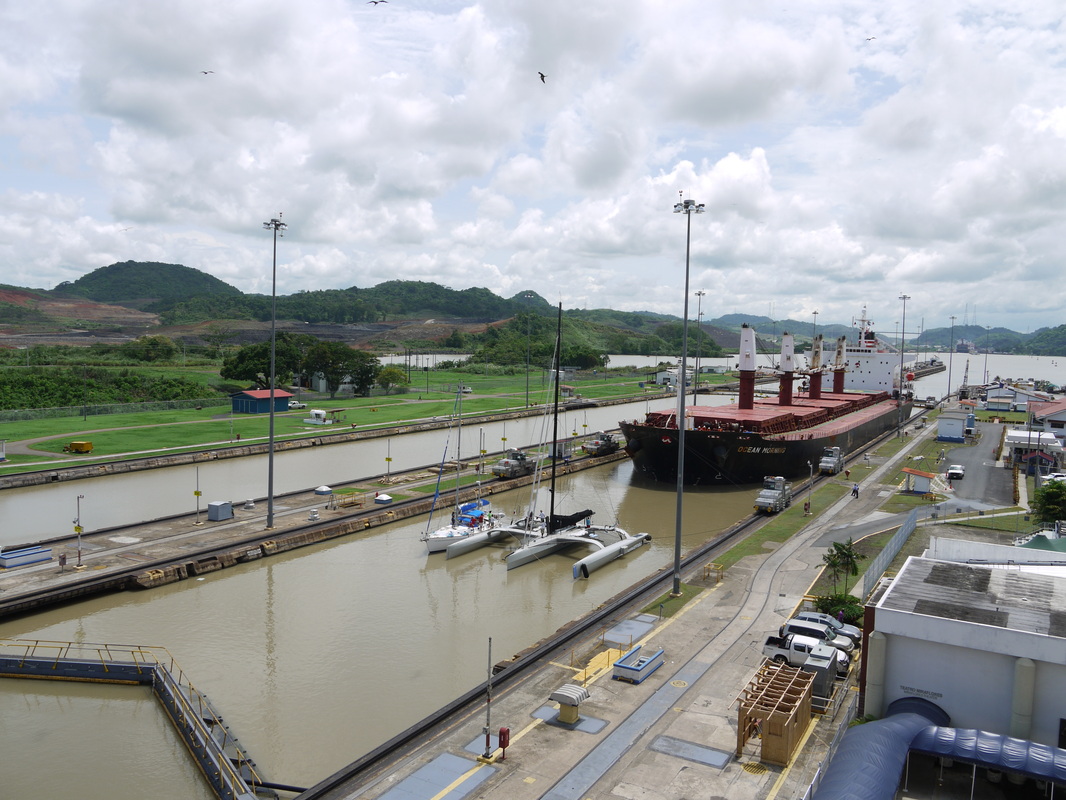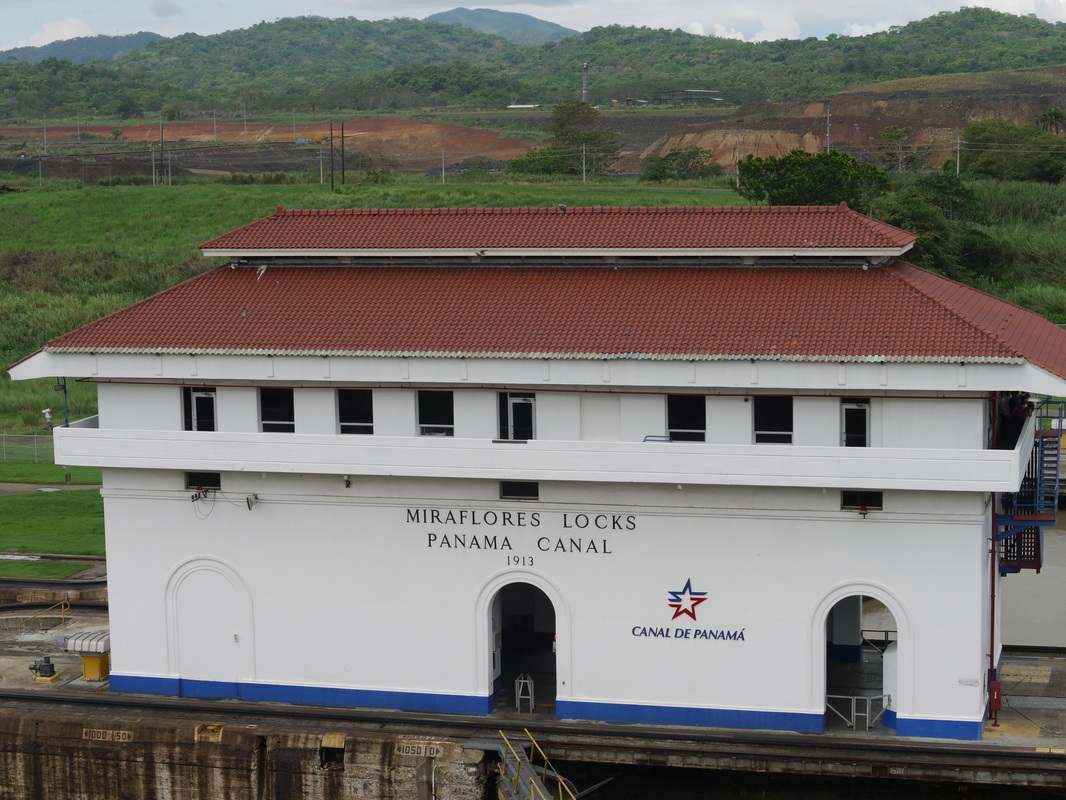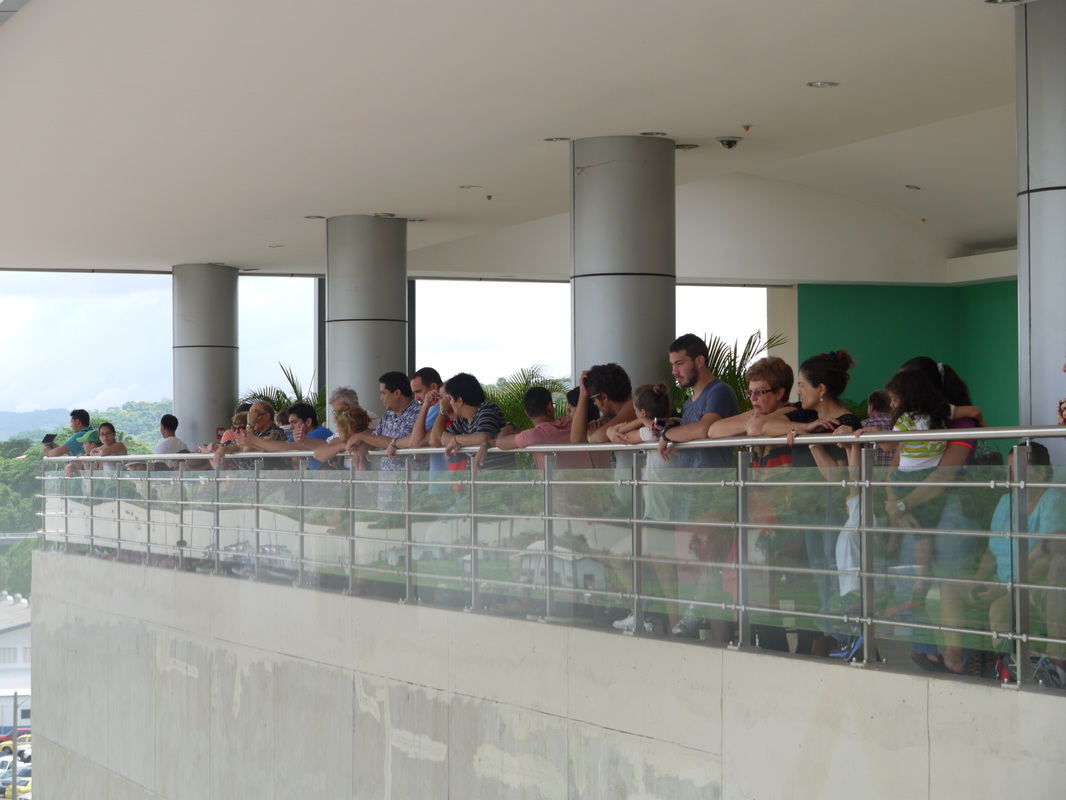We enjoyed (read: didn't) an overnight bus from Bocas to Panama City, arriving at 4.30am. We met an Austrian girl on our shuttle into Panama from Costa Rica so the three of us caught a taxi to a hostel in the old town and fortunately they had beds available so we all crashed out for a few hours before getting up to do some sightseeing.
Panama City suprised me. All of the other capital cities in Central America have been hustling, bustling places that I wanted to get out of pretty quickly (if even stop in at all) but while I'm sure some parts of town are less desirable than others (just as in any big city), the main CBD, waterfront and old town all have a very cosmopolitan feel to them.
There is clearly a lot of investment going on here. A $1 billion metro system is being built, and the waterfront promenade is bulging with peope running, cycling, playing sports, and families enjoying the open spaces. The current bus system, while still confusing to newly landed foreigners, seems to be very efficient and cheap with prepay cards like you use in the UK or NZ. Its really nice to walk around Casco Viejo (the Old Town) and see the beautiful old buildings being brought to life again. And while the mass rapid urban development that has gone on over the last 10 years has brought its own set of problems (12,000 new hotel rooms adding more strain to the antiquated sewer system for example) the city has a positive vibe, and seems to be looking forward to the future and what it will hold.
Panama City suprised me. All of the other capital cities in Central America have been hustling, bustling places that I wanted to get out of pretty quickly (if even stop in at all) but while I'm sure some parts of town are less desirable than others (just as in any big city), the main CBD, waterfront and old town all have a very cosmopolitan feel to them.
There is clearly a lot of investment going on here. A $1 billion metro system is being built, and the waterfront promenade is bulging with peope running, cycling, playing sports, and families enjoying the open spaces. The current bus system, while still confusing to newly landed foreigners, seems to be very efficient and cheap with prepay cards like you use in the UK or NZ. Its really nice to walk around Casco Viejo (the Old Town) and see the beautiful old buildings being brought to life again. And while the mass rapid urban development that has gone on over the last 10 years has brought its own set of problems (12,000 new hotel rooms adding more strain to the antiquated sewer system for example) the city has a positive vibe, and seems to be looking forward to the future and what it will hold.
A visit to Panama wouldn't be complete without a visit to the infamous canal. A monolithic engineering achievement the Canal changed the way world trade is conducted and continuous to influence life and business on a daily basis. The original idea for a waterway linking the Atlantic and the Pacific came about in 1524, when Spain's King Carlos V ordered the survey of a route, however it wasn't until 1880 that the French started digging. After removing 59,747,620 cubic meters of rock, and 20 years of struggles with the jungle, diseases and finances they were forced to give up and it was 1903 before Panama seceded from Colombia and signed a treaty with the USA which allowed them to purchase the French Canal Company's land for $40 million and begin creation of the canal we know today.
One of the major challenges that the construction workers faced was the fight against yellow fever and malaria. In order to try and defeat the epidemics strategies including paving the streets in Panama, screening doors and windows, fumigating houses one by one, providing a clean water supply and sewarage system and draining marshes, wetlands and stagnant waters to prevent the breeding of mosquitos were put in place.
Dry excavation lasted 7 years and more than 153 million cubic meters of rock were removed from the Culebra Cut (the most challenging part of the canal), using more than 60 million pounds of dynamite. To put that in perspective they could have built 63 Egyptian pyramids with the material they removed. The canal is about 80km long and ships are lifted 85 feet by three locks. All of the lock chambers are the same size and it takes 100 million litres of water to fill them! An average journey through the canal can take about 8 hours, with ships normally being in the Canal waters for 14-16 hours including waiting and paperwork time.
One of the major challenges that the construction workers faced was the fight against yellow fever and malaria. In order to try and defeat the epidemics strategies including paving the streets in Panama, screening doors and windows, fumigating houses one by one, providing a clean water supply and sewarage system and draining marshes, wetlands and stagnant waters to prevent the breeding of mosquitos were put in place.
Dry excavation lasted 7 years and more than 153 million cubic meters of rock were removed from the Culebra Cut (the most challenging part of the canal), using more than 60 million pounds of dynamite. To put that in perspective they could have built 63 Egyptian pyramids with the material they removed. The canal is about 80km long and ships are lifted 85 feet by three locks. All of the lock chambers are the same size and it takes 100 million litres of water to fill them! An average journey through the canal can take about 8 hours, with ships normally being in the Canal waters for 14-16 hours including waiting and paperwork time.
The height of each lock is the equivalent of an 8 storey building and to contain the water in the locks, steel gates 20m wide by 2 meters thick were built and the originals are still in use today. The gates weigh up to 700 tonnes (the same as more than 300 elephants!). These days the canal handles more than 13,000 ships a year, under the flags of 70 nations, although it is the USA, South Korea and Japan who are the most frequent customers. Boats pay tolls based on the amount of water they displace when going through the locks. The average toll for ships passing through is about $100,000, which sounds a lot, but many ships save about 10 times this figure by avoiding the several week long journey around the bottom of South America. The largest toll ever recorded was $419,000 by a Norwegian cruise ship and the smallest was 36 cents when a guy swam through them in 1936.
In 1977 US president James Carter and Panamanian Chief of State Omar Torrijos signed the Canal Treaties which set a date of December 31st 1999 for the total transfer of the Canal back to Panama and end the US military presence in the country. On the day, thousands of people celebrated in the streets.
As vessels have got larger and larger, there are a percentage of the world fleet that cannot fit through the canal. Some boats, known as 'Panamax' leave literally centimetres on either side when they pass through. In 2006 the Panamanians held a referendum about expanding the Canal and on Sept 3, 2007 the Canal Expansion works began. The $5 billion project is expected to be completed next year and will mean that vessels with the capacity to carry up to 12,000 containers will be able to pass through (compared to the limit of 4500 containers now). The new locks will be 40% longer and 66% wider than the existing locks, exquivalent to four soccer fields, and their depth similar to that of a 10 story building.
Don't get me wrong - Its a pretty impressive sight, and quite rightly one of the modern wonders of the world, but if you are not into modern engineering or shipping, once you've been through the museum you really don't need to spend a lot of time here.
Next stop: Colombia
In 1977 US president James Carter and Panamanian Chief of State Omar Torrijos signed the Canal Treaties which set a date of December 31st 1999 for the total transfer of the Canal back to Panama and end the US military presence in the country. On the day, thousands of people celebrated in the streets.
As vessels have got larger and larger, there are a percentage of the world fleet that cannot fit through the canal. Some boats, known as 'Panamax' leave literally centimetres on either side when they pass through. In 2006 the Panamanians held a referendum about expanding the Canal and on Sept 3, 2007 the Canal Expansion works began. The $5 billion project is expected to be completed next year and will mean that vessels with the capacity to carry up to 12,000 containers will be able to pass through (compared to the limit of 4500 containers now). The new locks will be 40% longer and 66% wider than the existing locks, exquivalent to four soccer fields, and their depth similar to that of a 10 story building.
Don't get me wrong - Its a pretty impressive sight, and quite rightly one of the modern wonders of the world, but if you are not into modern engineering or shipping, once you've been through the museum you really don't need to spend a lot of time here.
Next stop: Colombia




 RSS Feed
RSS Feed